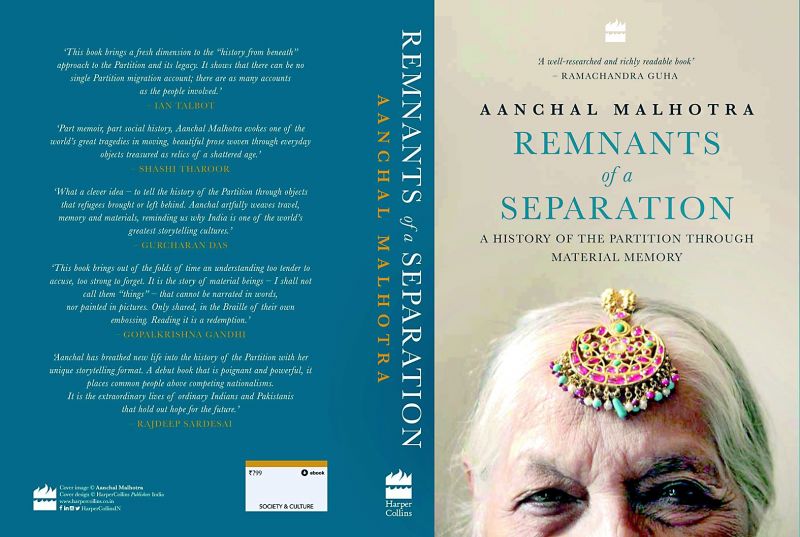Ambassadors of a Journey
A moving account of people carrying their prized possessions as they moved borders during partition forms the fulcrum of this book.

The Partition of 1947 remains a fragmented piece of India’s history mostly associated with violence, displacement, loss, and profound trauma. Aanchal Malhotra’s book Remnants of a Separation: A History Of The Partition Through Material Memory is a moving account of ordinary objects people carried along with them when they crossed borders between Indian and Pakistan. Using these objects as catalysts, Aanchal maps slices of personal stories through conversations with people who carried them, attempting to relive the significance of the experience in their lives.
The idea sparked in 2013 when Aanchal encountered a ghara (pot) and a gaz (measuring device) during a chance visit to her maternal grandparents’ home in North Delhi with a journalist friend who was doing a story on old houses. Soon she discovered other objects her great-grandparents had brought when they fled their homes: maang-tikka, pocketknife, peacock-shaped bracelet and a set of kitchen utensils. After that, came out stories of their migration and life before the divide.
 Remnants of a Separation A History of the Partition through Material Memory by Aanchal Malhotra HarperCollins India Pp. 400, Rs 799
Remnants of a Separation A History of the Partition through Material Memory by Aanchal Malhotra HarperCollins India Pp. 400, Rs 799
“All four of my grandparents’ family came from that side,” she shares. “But like other third or fourth generations, I had no idea what they gave to be here. When I first saw those two objects, I felt history had hit me on the head. It started off as a personal exercise, I was just quenching my curiosity. Why did people choose to bring certain things? I kept asking myself, what would I take?”
Aanchal, 28, was 23 at the time. “I found other people in Delhi, then in other cities in India, and eventually Pakistan and the diaspora. They all initially said, “Oh we came with nothing. Even my grandparents. Then, one by one, they showed me what they’d brought with them,” says Aanchal. “These things were quite mundane, not obviously, visibly, or monetarily valuable. Like a shawl, a knife or a fork, not things they necessarily remember as ambassadors of a journey across the border. Those were things of utility they needed.”
For Aanchal, this was a way of giving these mundane objects their right of place in history. “I am also glorifying them to an extent so they can be ambassadors of a journey, or storehouses of people memories. All that came about in the conversations I had,” she says, “We think of history as a large ageship tree, of dates, kings. But a lot of sub-continental history is actually oral and verbal. It lies in the personal spaces of people, in their homes. Unfortunately for people, their everyday traditions, habits, languages, songs, folk, culture don’t hold as much importance as actions of, say a King Porus.”
“These stories and oral traditions, that would get dissipated and dissolved with the death of people that hold on to them, will live on if they are written down, in their own languages. The book is mainly in English, with (translated) phrases and pages in Hindi, Sindhi, Punjabi, Bangla, Samane Shaahi, Kashmiri and Urdu because these are ways to identify people to land,” says Aanchal.
Aanchal first worked on the idea from the lens of photography and material culture as part of her dissertation for masters in fine arts from Concordia University, Montreal. Then came the decision to document these stories in a book. Finding a publisher in HarperCollins India was not difficult, she says, “The idea was original. I started writing the book in 2016, it was published in 2017! Even after 70 years, there was so much unexplored, still new lenses through which we can look at the same event.”
